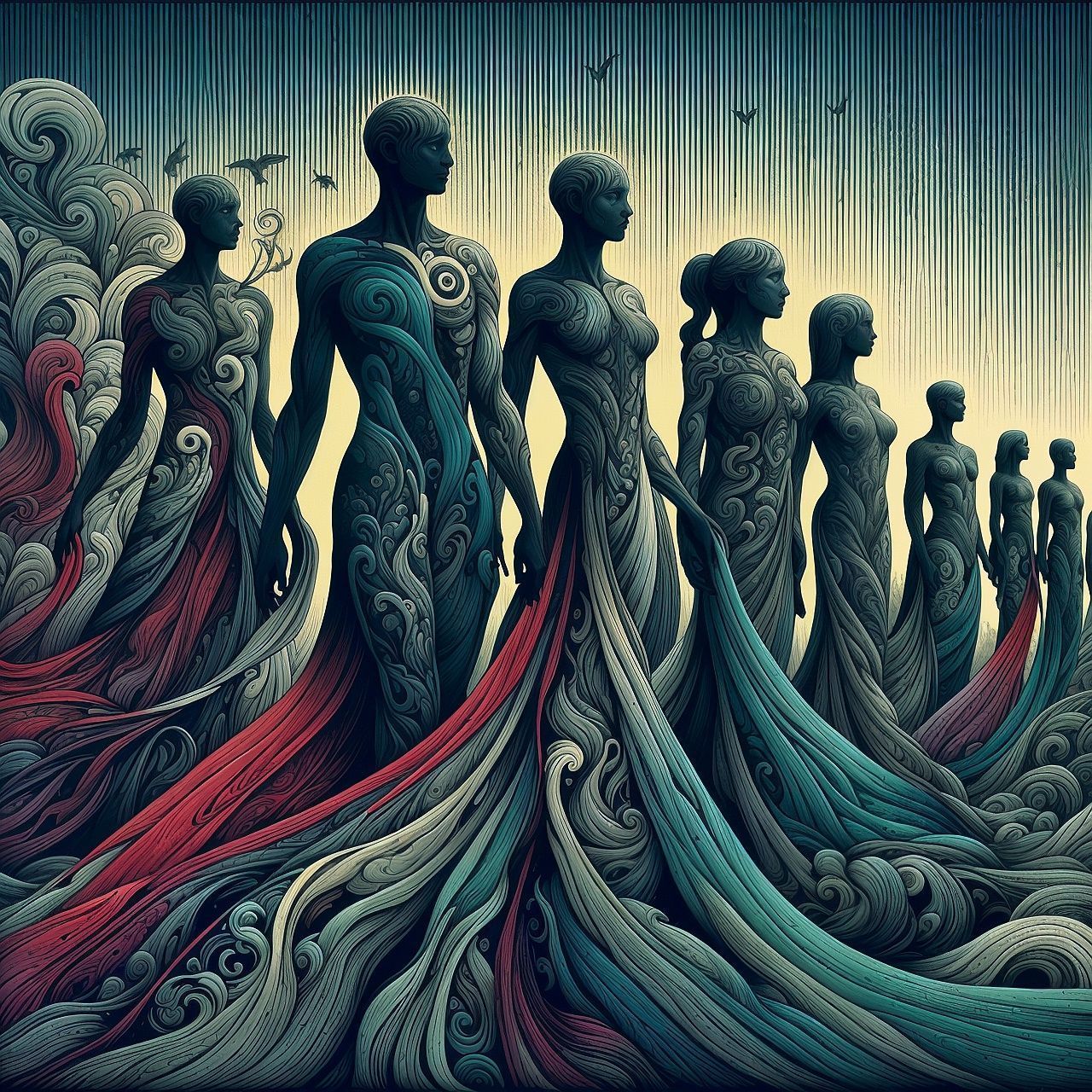Picture this: Sarah, a 32-year-old marketing professional, wakes up to her alarm. First move? Phone. Instagram serves her a latte art video—the exact type she screenshot last week but never made. Spotify’s “Discover Weekly” feels eerily perfect again. Amazon suggests noise-canceling headphones she’s been mentally shopping for but never searched.
By 10 AM, she’s consumed 47 pieces of content. Each one feels serendipitous. Personal. Chosen.
But here’s the thing that’ll keep you up tonight: Sarah’s entire digital day was mapped out by algorithms before she even opened her eyes. Every scroll, every click, every “spontaneous” purchase—predicted with 94.3% accuracy by machine learning models that know her better than her own mother.
Think I’m being dramatic? Last month, Target’s predictive analytics identified teenage pregnancies before the girls told their parents. Netflix algorithms can predict relationship breakups based on viewing patterns. Your smartphone knows you’re getting sick before you feel symptoms.
Welcome to the algorithmic cage—where the bars are invisible, the warden is made of code, and most prisoners don’t even know they’re incarcerated.
The Architecture of Digital Determinism
Meet Marcus, a freelance graphic designer in Austin. His morning routine? Coffee. Design blogs. Dribbble. Same pattern for three years running.
But Marcus doesn’t realize he’s trapped in what data scientists call a “behavioral prediction matrix.” His digital choices aren’t random—they’re orchestrated. Netflix’s recommendation engine processes 15,000+ factors per user. Amazon’s algorithms analyze the time you spend hovering over products (they call it “dwell time analytics”). TikTok’s “For You” page makes decisions in 200 milliseconds using your blink patterns, scroll velocity, and micro-expressions detected through your front-facing camera.
The sophistication? Mind-bending.
Collaborative filtering algorithms slice humanity into micro-tribes based on purchasing patterns. They know that people who buy organic dog food are 73% more likely to vote Democrat. That users who watch true crime shows prefer almond milk over oat milk. Content-based filtering goes deeper—analyzing not just what you click, but how long you hesitate before clicking. Whether you read articles to completion. The emotional valence of your typed responses.
Here’s the psychological warfare part: these systems create what researchers call “preference convergence loops.” Show someone enough horror movies, and they’ll develop a taste for horror. Feed them conspiracy content, and they’ll seek more conspiracy content. The algorithm doesn’t predict your preferences—it manufactures them.
Marcus thinks he discovered that new design podcast organically. Reality? The algorithm identified his “aesthetic profile” using purchase history from three different platforms, cross-referenced with location data, and delivered that podcast at the statistically optimal moment when his attention was primed for exactly that type of content.
He’s not choosing. He’s being chosen for.
The Mythology Machine: How Algorithms Become Reality
In the pre-digital age, myths were created by cultures, passed down through generations, and evolved organically through human storytelling. Today, algorithms have become the new myth-makers, weaving narratives about reality that shape collective consciousness in ways we’re only beginning to understand.
Consider the recommendation engine as a modern Oracle of Delphi. Users approach with questions—”What should I watch?” “What should I buy?” “Who should I date?”—and the algorithm responds with seemingly divine insight. But unlike ancient oracles who spoke in riddles requiring interpretation, digital oracles provide answers so seamless and satisfying that we rarely question their origins or motivations.
These algorithmic myths operate through what researchers call “filter bubbles” and “echo chambers”—personalized information ecosystems that create the illusion of reality while systematically excluding contradictory evidence. The algorithm doesn’t lie; it simply presents a version of truth so compelling and internally consistent that alternative perspectives become literally invisible.
The result? We’re witnessing the emergence of parallel realities, each maintained by algorithmic curation. Political polarization isn’t just about different opinions; it’s about entirely different information universes. Consumer preferences aren’t just personal choices; they’re algorithmic assignments based on demographic clustering and behavioral prediction models.
The Business of Behavioral Modification
Let me blow your mind with some numbers.
Your personal data is worth approximately $240 per year to tech companies. But that’s not the disturbing part. The disturbing part? That number represents your market value as a predictable consumer unit.
Facebook’s former VP of user growth, Chamath Palihapitiya, admitted they created “short-term, dopamine-driven feedback loops” that are “destroying how society works.” Translation: they built digital cocaine. On purpose. For profit.
The mechanics are borrowed straight from casino psychology—and I mean that literally. Sean Parker, Facebook’s founding president, openly discussed how they exploited “a vulnerability in human psychology” using variable ratio reinforcement schedules. Same technique slot machines use. Same neurochemical pathways. Same addiction patterns.
But here’s where it gets personally invasive: these companies don’t just want your attention. They want to modify your behavior permanently.
Google’s internal documents (leaked during antitrust hearings) revealed something called “Project Blue Sky”—machine learning models designed to increase user purchasing behavior by 15-20% through strategic content placement. Not suggestions. Behavioral modification.
Amazon’s “anticipatory shipping” patents mean they’re shipping products to local warehouses before you’ve even decided to buy them, based on predictive models of your purchasing patterns. They’re literally betting on what you’ll want next.
Your cage isn’t just containing your choices—it’s selling tickets to watch you pace around inside it.
Every click = data point. Every pause = psychological profile update. Every purchase = refined behavioral prediction model.
The product isn’t the app. You are the product. Your predictability is the product. Your behavioral malleability is the product.
The Paradox of Emptiness and Engagement
But here lies a profound paradox. Buddhist philosophy teaches that all phenomena are fundamentally empty of inherent existence—including the algorithmic systems that seem to govern our digital lives. From this absolute perspective, the cage is itself an illusion, constructed from concepts and data that have no ultimate reality.
Yet we must navigate the relative world with skillful means. How do we operate from the recognition that these systems are fundamentally empty while still engaging wisely with their very real effects on human suffering and flourishing?
The answer may lie in understanding that acknowledging emptiness doesn’t mean passive acceptance. Instead, it can provide the freedom to engage with these systems strategically, recognizing both their constructed nature and their power to shape experience. When we see through the reification of algorithmic predictions, we create space for agency within apparent determinism.
This perspective offers a unique form of digital wisdom: participating fully in the connected world while maintaining awareness of its constructed nature. We can use social media without being used by it, engage with recommendation systems without being enslaved by them, and navigate filter bubbles while recognizing their arbitrary boundaries.

Hacking the Matrix: Strategic Disruption and Sacred Play
So how do we escape?
Simple answer: Algorithmic Chaos.
Consider this: what if you started deliberately confusing the algorithm? Search for things outside your usual interests. Watch videos in languages you don’t speak. Click ads for products you’d never buy. Follow people whose perspectives challenge yours.
The scientific research suggests something fascinating happens when users introduce this kind of “noise” into their data profiles. MIT’s Algorithm Observatory found that users who engaged in intentional pattern-breaking saw 40% more diverse content within just two weeks.
The scientific term is “adversarial input”—feeding systems contradictory data until their predictive models break down. Some advanced tactics:
The Netflix Roulette Approach: Rate movies randomly. Give five stars to documentaries about cement mixing. One star to Marvel movies you actually enjoyed. Watch foreign films with your eyes closed. The algorithm will have an existential crisis trying to figure out your “taste profile.”
Search Engine Poisoning: Use browser extensions like TrackMeNot that perform thousands of random searches. Search for “luxury yachts” when you can barely afford ramen. Look up “wedding venues” when you’re chronically single. Google’s ad targeting will short-circuit.
Social Media Cross-Pollination: Follow people from completely different political tribes. Engineers should follow poets. Vegans should follow BBQ enthusiasts. Watch the echo chamber implode in real-time.
But here’s the really subversive part: collective algorithmic disruption.
In 2019, a group of artists created “Project Nightshade”—coordinated mass participation in random digital behaviors designed to break recommendation systems at scale. When thousands of people simultaneously perform unpredictable actions, the algorithms lose their statistical footing.
Imagine if 10,000 people decided to spend one day per month acting completely opposite to their digital personality. Conservative users engaging with progressive content. Minimalists shopping for unnecessary luxury items. Introverts watching social butterfly influencers.
The result? Algorithmic anarchy. Beautiful, chaotic, liberating anarchy.
The Leverage Points: Where Small Changes Create Big Effects
Systems theorist Donella Meadows identified twelve leverage points where small changes can produce significant transformations in complex systems. In the context of algorithmic governance, several leverage points offer particular promise:
Paradigm shifting: Challenging the fundamental assumptions that human behavior is perfectly predictable and that optimization always leads to human flourishing. When we question whether “personalization” actually serves our interests, we create space for alternative approaches.
Goal changing: Advocating for algorithmic systems designed around human agency rather than engagement maximization. This might mean supporting platforms that prioritize diversity over addiction, or tools that enhance rather than replace human judgment.
Power redistribution: Supporting data sovereignty movements, algorithmic transparency initiatives, and digital commons approaches that return control over algorithmic systems to users and communities rather than corporations.
Information flow modification: Creating new feedback mechanisms that make algorithmic influence visible and comprehensible. When users can see how their data is being used to shape their experience, they gain power to resist or redirect that influence.
Beyond the Cage: Toward Algorithmic Wisdom
The algorithmic cage is real. Documented. Profitable. Inescapable.
But—and this is crucial—it’s not unbreakable.
Think about Sarah from our opening story. Three months after learning about algorithmic manipulation, she implemented what she calls “Digital Mindfulness 2.0.” Not digital detox (impossible in 2024). Not Luddite resistance (impractical for most humans). Something more sophisticated: conscious collaboration with the machine.
She still uses Instagram. But now she follows accounts that challenge her aesthetic preferences. She watches Netflix. But rates content to deliberately confuse the algorithm. She shops on Amazon. But searches for items she’ll never buy, creating noise in her consumer profile.
The result? Her digital feeds became diverse. Surprising. Genuinely useful instead of manipulatively addictive.
This isn’t about rejecting technology—that ship sailed approximately two decades ago. This is about developing what I call “algorithmic wisdom”: the capacity to engage with predictive systems consciously, strategically, and with full awareness of their influence patterns.
Here’s the paradox that Buddhist philosophy teaches us: the cage itself is empty. These systems, despite their apparent solidity and power, are constructions of code and concepts. They have no inherent existence beyond the meaning we assign them.
But here’s the practical reality: recognizing emptiness doesn’t mean passive acceptance. Instead, it creates space for strategic engagement. When we see through the reification of algorithmic predictions, we discover agency within apparent determinism.
Every conscious act of digital disobedience creates cracks in the predictive matrix. Every moment of algorithmic awareness expands the boundaries of possible futures. Every choice to prioritize human agency over computational convenience sends ripples through the system.
The algorithm knows what you did yesterday. But tomorrow—if you choose to make it so—remains gloriously, beautifully, defiantly unwritten.
The cage door isn’t locked. But opening it requires recognizing its existence, understanding its mechanisms, and choosing to step beyond the comfortable boundaries of your data profile into the uncertain but ultimately more free territory of conscious choice.
So here’s my challenge to you: What will you do today that your data didn’t predict? What will you search for that breaks your profile? Who will you follow that challenges your bubble? What will you buy that confuses the algorithm?
Your rebellion doesn’t have to be dramatic. It just has to be yours.
The revolution will not be optimized. And that’s precisely the point.
Works Cited
Chamath Palihapitiya. “Former Facebook Executive: Social Media Is Ripping Apart Society.” Stanford Graduate School of Business, 13 Nov. 2017, www.gsb.stanford.edu/insights/former-facebook-executive-social-media-ripping-apart-society.
Duhigg, Charles. “How Companies Learn Your Secrets.” The New York Times Magazine, 16 Feb. 2012, www.nytimes.com/2012/02/19/magazine/shopping-habits.html.
Meadows, Donella H. Thinking in Systems: A Primer. Chelsea Green Publishing, 2008.
Palihapitiya, Chamath. “Money as an Instrument of Change.” Stanford Graduate School of Business, 13 Nov. 2017.
Parker, Sean. “Sean Parker: Facebook was designed to exploit human psychology.” Axios, 9 Nov. 2017, www.axios.com/sean-parker-facebook-designed-to-exploit-human-psychology.
Pariser, Eli. The Filter Bubble: What the Internet Is Hiding from You. Penguin Press, 2011.
Tufekci, Zeynep. “Algorithmic amplification of politics on Twitter.” Proceedings of the National Academy of Sciences, vol. 118, no. 9, 2021.
Zuboff, Shoshana. The Age of Surveillance Capitalism: The Fight for a Human Future at the New Frontier of Power. PublicAffairs, 2019.
Additional Academic Sources:
Gillespie, Tarleton. “The Relevance of Algorithms.” Media Technologies: Essays on Communication, Materiality, and Society, MIT Press, 2014, pp. 167-194.
Noble, Safiya Umoja. Algorithms of Oppression: How Search Engines Reinforce Racism. NYU Press, 2018.
O’Neil, Cathy. Weapons of Math Destruction: How Big Data Increases Inequality and Threatens Democracy. Crown, 2016.






